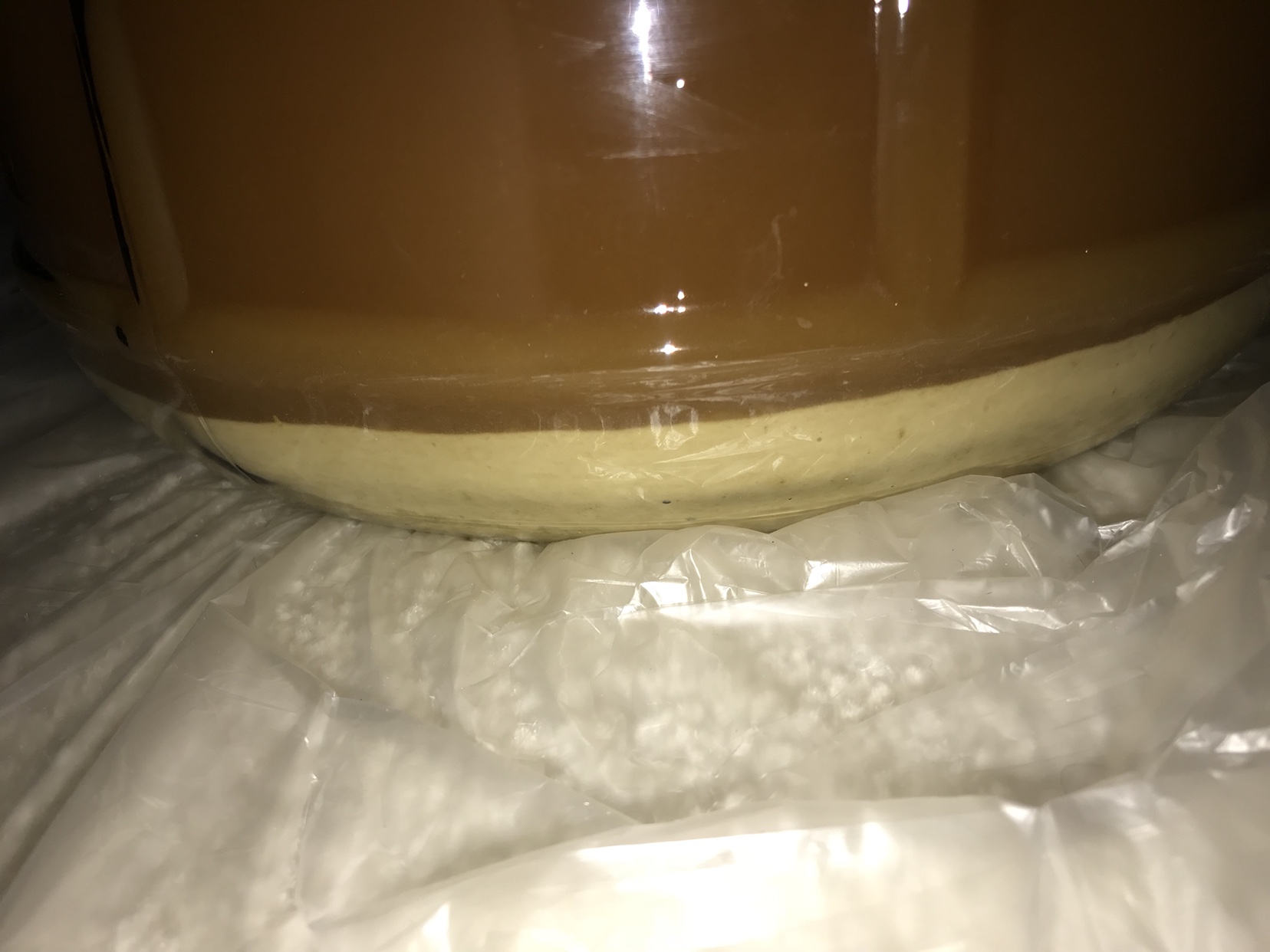elgatovolador
Well-Known Member
- Joined
- Jan 14, 2019
- Messages
- 61
- Reaction score
- 47
Hey guys. New-ish to the hobby and about to keg a 5 gal batch for the first time. The beer I’m going to keg is an imperial ipa extract kit using two Omega West Coast Ale II Yeast Slurry packs from NB. I did not use a yeast starter, I just pitched it right in the wort after it cooled down to 78 deg. Yeast temp range is 60-72 deg F.
After brewday I had to leave for work (road warrior over here) and the temperature where I live fluctuated between 36 deg F to 50. It was in my garage and my wife checked the fermagraf every other day and the beer stayed in the 46-50 range. After endless browsing in different threads I found a lot of explanations of cold temperature effects on primary fermentation, such as the yeast going dormant. I also got to read that you can get off flavors from fermentation not finishing all the way through due to unfermented sugars.
I finally came back home 6 days after, and I found the primary fermentor at 56 deg. It had a hefty head of krausen and low airlock activity. From my research, I decided to try and wake up the yeast to make up for messing up and letting it go below the target temp. I took it inside put it in a closet and waited until it warmed up to 60 deg, then carefully mixed the yeast cake with a clean and sanitized metal clothes hanger with no splashing to prevent inducing O2. At this point from me moving it and all, the krausen Head had fallen.
One day after my attemp of trying to nudge my yeast awake, I have airlock activity again and a pretty hefty head of krausen (pictured). I also see yeast particles float from the bottom to the top every once in a while. Beer now sits at 64 deg. Debating on skipping secondary, but will definitely dry hop in about 4 weeks, then cold crash it in my fridge before kegging.
Now that you know my beers life story (sorry for the long post, first timer here), does anyone have experience with almost freezing your primary fermentation like I did? Did it have an effect on the flavor of the beer? I really haven’t found any articles on the effect of cold temperature swings like mine. From what I can tell, fermentation is back up going. I forgot to measure gravity when I did all this but the OG from the recipe is 1.086. When I keg I’ll make sure to measure and update the thread.
Thanks for reading, any input is much appreciated!



(Photos of primary fermentation 6 hours after yeast awakening attempt)
After brewday I had to leave for work (road warrior over here) and the temperature where I live fluctuated between 36 deg F to 50. It was in my garage and my wife checked the fermagraf every other day and the beer stayed in the 46-50 range. After endless browsing in different threads I found a lot of explanations of cold temperature effects on primary fermentation, such as the yeast going dormant. I also got to read that you can get off flavors from fermentation not finishing all the way through due to unfermented sugars.
I finally came back home 6 days after, and I found the primary fermentor at 56 deg. It had a hefty head of krausen and low airlock activity. From my research, I decided to try and wake up the yeast to make up for messing up and letting it go below the target temp. I took it inside put it in a closet and waited until it warmed up to 60 deg, then carefully mixed the yeast cake with a clean and sanitized metal clothes hanger with no splashing to prevent inducing O2. At this point from me moving it and all, the krausen Head had fallen.
One day after my attemp of trying to nudge my yeast awake, I have airlock activity again and a pretty hefty head of krausen (pictured). I also see yeast particles float from the bottom to the top every once in a while. Beer now sits at 64 deg. Debating on skipping secondary, but will definitely dry hop in about 4 weeks, then cold crash it in my fridge before kegging.
Now that you know my beers life story (sorry for the long post, first timer here), does anyone have experience with almost freezing your primary fermentation like I did? Did it have an effect on the flavor of the beer? I really haven’t found any articles on the effect of cold temperature swings like mine. From what I can tell, fermentation is back up going. I forgot to measure gravity when I did all this but the OG from the recipe is 1.086. When I keg I’ll make sure to measure and update the thread.
Thanks for reading, any input is much appreciated!



(Photos of primary fermentation 6 hours after yeast awakening attempt)


